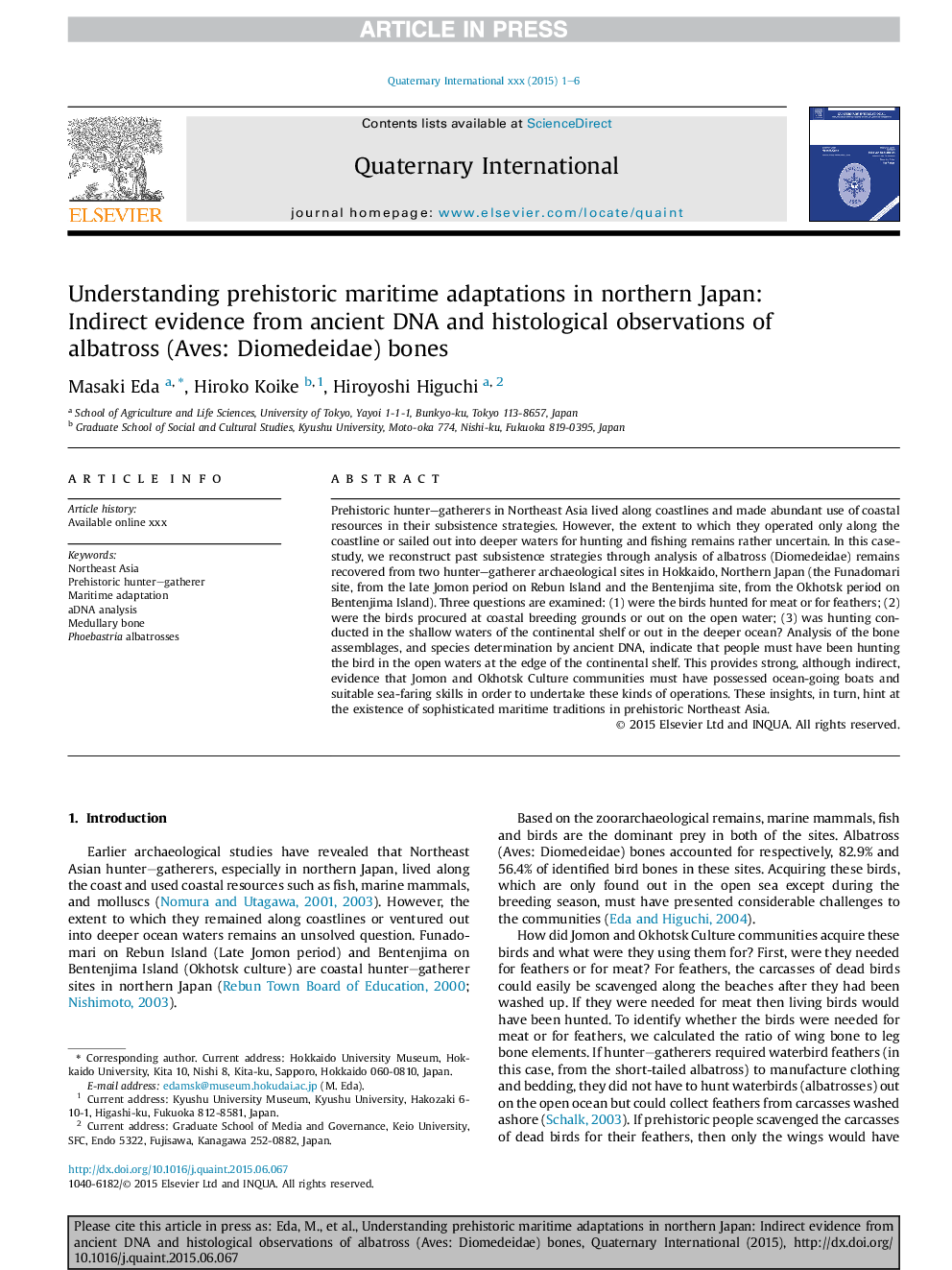| Article ID | Journal | Published Year | Pages | File Type |
|---|---|---|---|---|
| 5114093 | Quaternary International | 2016 | 6 Pages |
Abstract
Prehistoric hunter-gatherers in Northeast Asia lived along coastlines and made abundant use of coastal resources in their subsistence strategies. However, the extent to which they operated only along the coastline or sailed out into deeper waters for hunting and fishing remains rather uncertain. In this case-study, we reconstruct past subsistence strategies through analysis of albatross (Diomedeidae) remains recovered from two hunter-gatherer archaeological sites in Hokkaido, Northern Japan (the Funadomari site, from the late Jomon period on Rebun Island and the Bentenjima site, from the Okhotsk period on Bentenjima Island). Three questions are examined: (1) were the birds hunted for meat or for feathers; (2) were the birds procured at coastal breeding grounds or out on the open water; (3) was hunting conducted in the shallow waters of the continental shelf or out in the deeper ocean? Analysis of the bone assemblages, and species determination by ancient DNA, indicate that people must have been hunting the bird in the open waters at the edge of the continental shelf. This provides strong, although indirect, evidence that Jomon and Okhotsk Culture communities must have possessed ocean-going boats and suitable sea-faring skills in order to undertake these kinds of operations. These insights, in turn, hint at the existence of sophisticated maritime traditions in prehistoric Northeast Asia.
Keywords
Related Topics
Physical Sciences and Engineering
Earth and Planetary Sciences
Geology
Authors
Masaki Eda, Hiroko Koike, Hiroyoshi Higuchi,
